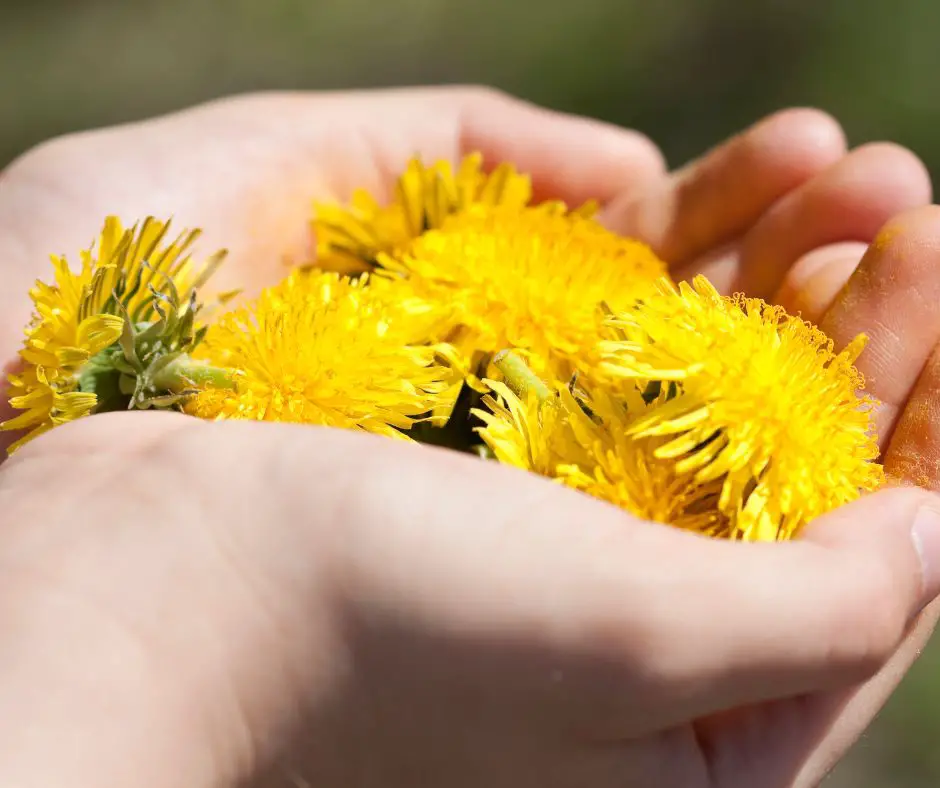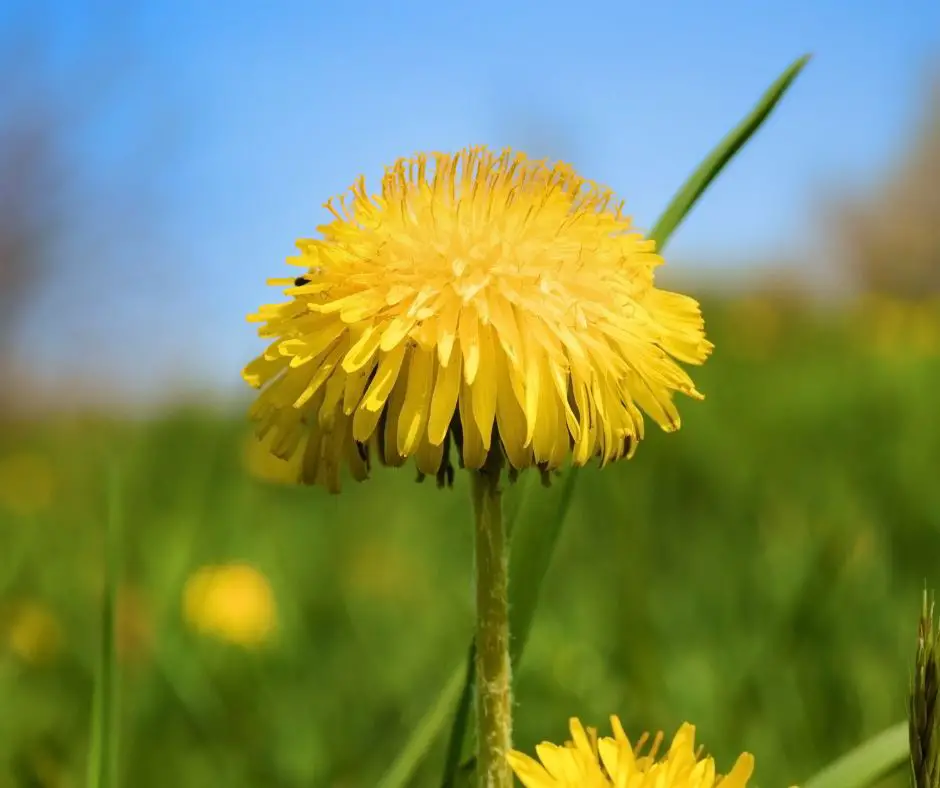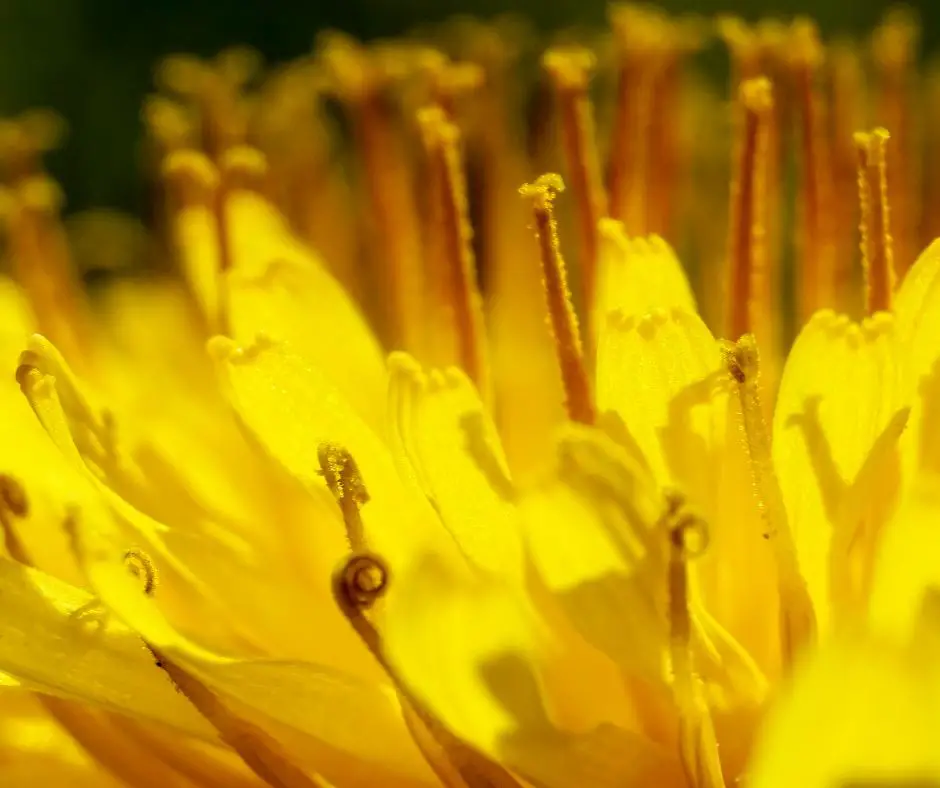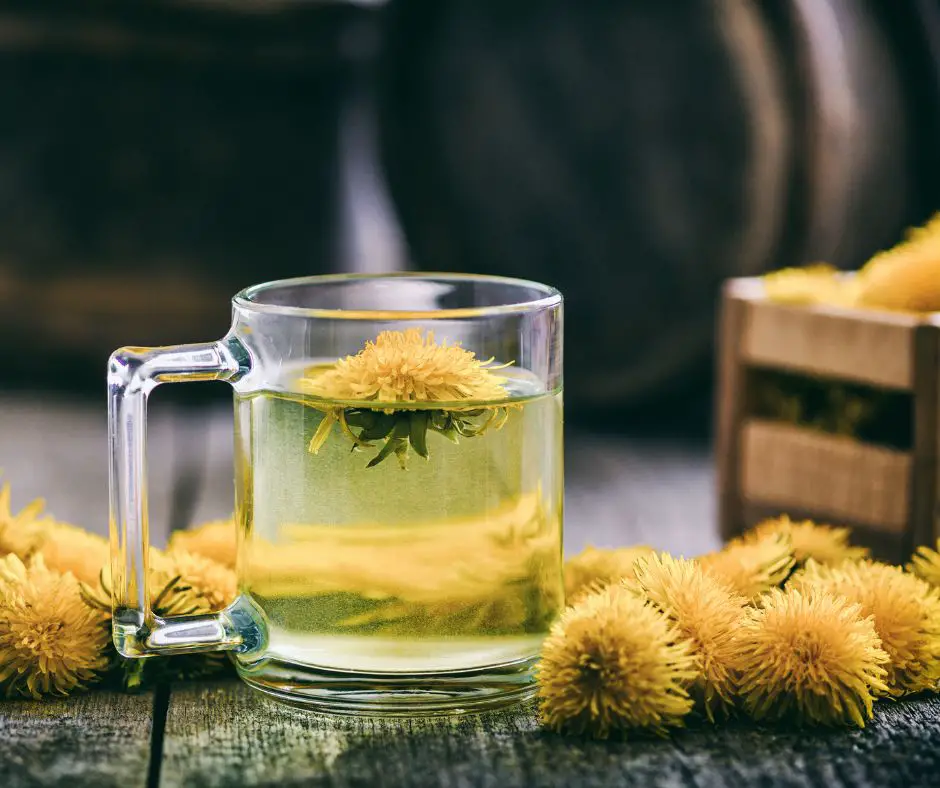Did you know you can forage for dandelions in spring? Dandelions are edible, nutritious, and have many health benefits. But what does dandelion taste like?
Dandelion’s flavor is comparable to kale, but it can turn out earthy and bitter. However, the taste depends on which part of the plant you use in your recipe. Leaves inherently taste butter, but flowers and roots have sweet notes.
Read on to find out more details about dandelions, including how to use them in various recipes.
Contents
Can You Eat Dandelion?

Yes. You can eat dandelions. Their leaves, roots, and flowers are all edible and a good source of vitamins and minerals, including vitamins A, C, and K.
Dandelions are abundantly available in the wild. So, instead of spending much at a grocery, you can forage for these freely available greens. Your only task is to identify them in the wild. Luckily, they are available in almost every part of the United States.
Dandelions are easily identified by their bright yellow flowers and basal leaves. The leaves grow directly from the stem and are green and jagged.
If you want to forage dandelions, the best time to find young plants is early spring. Mature ones have bitter leaves that may not be palatable. Choose plants that are yet to produce flowers.
Dandelions are best known for their high vitamin content. However, they also contain saturated fats, cholesterol, and dietary fiber. The following is a chart of vitamins and minerals you find in these plants.
| Vitamins | Minerals |
| Vitamin A | Iron |
| Vitamin B6 | Calcium |
| Vitamin C | Protein |
| Vitamin E | Potassium |
| Vitamin K | Manganese |
| Thiamine (Vitamin B1) | |
| Riboflavin (Vitamin B2) |
What Does Dandelion Taste Like?

The taste of dandelions depends on the part of the plant and its age. As mentioned, you can eat leaves, flowers, or roots and have varying flavors. But generally, dandelions taste like kales, the only difference being they are a bit sweeter.
The taste can also vary depending on the recipe. For example, a dandelion flower tea tastes similar to a cup of chrysanthemum tea. It is slightly sweet with honey flavors.
Taste of Dandelion Root
The roots of dandelions are edible. After digging them from the ground, clean them using a vegetable or potato brush to scrub off dirt.
The roots can be peeled and boiled like potatoes or chopped into smaller pieces and roasted. Boiled dandelion roots are eaten whole, while roasted ones are used to make tea.
You can make dandelion root tea by following the procedure below:
- Pour 1 cup of water into a saucepan.
- Bring it to boil at about 140 degrees Fahrenheit.
- Add 2 tablespoonfuls of dried dandelion roots and let it steep for about 3 minutes.
- Turn off the heat and let the resulting mixture steep for another 30 minutes.
- Restrain the mixture and add honey to the liquid filtrate to taste.
The flavor of dandelion root tea is similar to coffee, but it is less acidic. You can pair it with milk, sweetener, or lemon juice to enhance its taste.

Organic Dandelion Root | Loose Tea (50+ Cups)
Taste of Dandelion Leaf
Dandelion leaves are earthy and bitter, just like radicchio or endive. You should harvest the leaves in early spring or before they blossom. Their bitterness intensifies as the plant matures.
Leaves picked from young plants can be used raw in salads. You can also sauté leaves using olive oil and salt, but you can add pepper, garlic, or parmesan to taste.
Other people prefer making green quiche, pesto, or even tea. You can find these recipes online from different sources.
Taste of Dandelion Flower
Dandelion flowers are used for making wine or tea. Dandelion wine is faintly sweet and makes one of the best summer drinks.
However, people have found different ways of using these bright yellow blossoms, including making syrup, jam, jelly, etc. In the listed cases, the taste will be more like a fried zucchini blossom.
You can also enhance the flavor using honey and cinnamon. If you like spices, consider rosemary and thyme.

Dandelion flowers are highly perishable. You should forage just what you need and use them immediately if you don’t have a refrigerator.
Many people prefer making dandelion flower tea because it is a straightforward procedure. If you are interested, proceed as follows:
- Forage for about 10 dandelion flowers and remove the leaves on the stalk. Keep it in a pitcher.
- Boil one cup of water in a saucepan and pour it inside the pitcher with dandelion flowers
- Let the content steep for about 20 minutes and restrain the mixture.
- Add 2 tablespoons of honey to the liquid filtrate and stir well.
How to Eat Dandelions
You can eat dandelions in many ways, some of which we have already mentioned. You should cook the greens or leaves to eliminate some bitterness.
Dandelion leaves are used in salads and in making green quiche. If you choose flowers, you can get many recipes that require them as an ingredient. Apart from dandelion wine and tea, flowers can make syrup, jelly, jam, and many other things.
Dandelion roots can be boiled and eaten whole as potatoes. Alternatively, you can roast or dry them to make dandelion root tea.
Health Benefits of Dandelions
- Fights inflammation
- Aids in blood sugar management
- Reduces cholesterol and triglyceride levels
- Lowers blood pressure
- Promotes liver health
- Aids in weight loss
- Produces anticancer effects
- Supports healthy digestion and reduces constipation
- Boosts immune health
- Aids in skin care treatment
- Supports healthy bone growth
Side Effects of Eating Dandelions
Dandelions, though useful, should be moderately used because of the associated side effects. Generally, you will rarely experience any side effects if you use them appropriately.
The most-reported effect of eating dandelions is that it can water down the effectiveness of some antibiotics, anticoagulants, and blood sugar drugs.
That implies you should not include dandelions in your diet if you are on such medications. If you are not sure, consult your healthcare specialist.
Some people may experience the following signs of side effects of dandelion:
- Allergic reactions
- Stomach discomfort
- Diarrhea
- Heartburn

Conclusion
Dandelions grow almost anywhere that remains undisturbed for a while, making them easy to find. You can forage dandelion flowers, leaves, or roots for your intended recipe.
These can be used to make wine, tea, jelly, quiche, syrup, and other foods. But if you need greens, harvest them in early spring or from young plants because they are less bitter.
Thank you for your time at Em Offgrid reading this article. We appreciate and hope you have the answers about foraging dandelions. Share this information with your friends and explore our website for related content.
